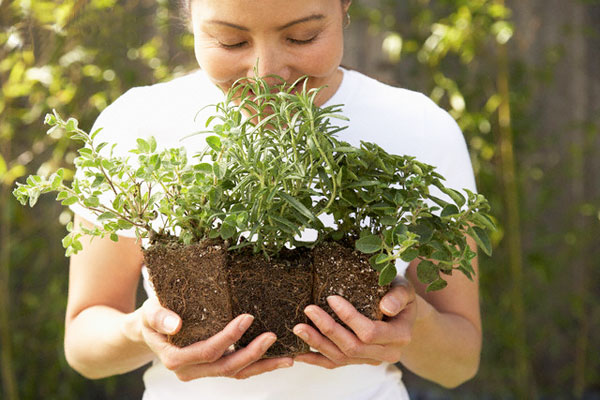
Large-scale research projects are underway worldwide in an effort to discover and measure the effectiveness of therapies long-used by non-Western cultures to combat illness and promote health. One of these research projects, taking place in California, is the screening of Chinese herbs and compounds to measure their ability to fight breast cancer cells. By analyzing the active chemicals in more than 70 different herbs, scientists have found some considerable potency in a few of them. Some examples are:
- Ban Zhi Lian (Chinese) – Scutellaria barbatae (Latin) – This herb inhibited breast cancer cells in the lab, and will be tested in a group of women with metastatic breast cancer who are taking no other cancer drugs. Tea made from the herb has been used for a variety of purposes – including treatment of liver, lung, and rectal cancer. The herb is brewed into a dark tea. It’s very potent, and only a small cupful provides a full dose. Avoid drinking lots of the tea in an effort to prevent cancer.
- Zhi Mu – Anamarrhena asphodeloides – Lab tests showed it to be “highly active” against breast cancer cells. Future clinical trials are being considered.
- Wang Bu Liu Xing – Vaccaria sigetalis – Also “highly active” against breast cancer cells in the lab, and being considered for future trials.
Not only found in herbal lore, health experts are discovering a new and healthy way for all of us to maximize their use of herbs. One of the best ways to introduce and sustain the use of healthy herbs andvitamins in our daily lives is to cook with them. These phytochemicals (phyto = plant) are present in fruits, vegetables, whole grains, and culinary herbs, and number in the thousands. Scientists have found they go beyond protecting against many chronic diseases and actively fight cancer as well.
Coriander, rich in coriandrol, helps combat breast and liver cancers. In animal studies, coriandrol stops aflatoxin (a liver toxin) from binding with DNA. Aflatoxin causes liver cancer in humans. Coriander is sold in seed form or fresh. Fresh coriander is known as cilantro.
One herb that helps guard against breast cancer is rosemary. Rosemary contains high levels of carnosol, a chemical that breaks down other chemicals that can start a cancer process.
The common garden mint plant contains limonene, a powerful anti-cancer agent that studies suggest blocks the development of breast tumors and may actually shrink them. We also encounter limonene in citrus peels, such as oranges, grapefruits, and lemons, though few of us eat much of the peel. But mint can be used in many foods and drinks as a flavor enhancer.
Many of us know about garlic and onions, each of which contains allyl sulfides, powerful and helpful antioxidants, and substances shown to lower cholesterol and thin the blood. The same group of compounds has anticancer properties. Other herbs and vegetables with strong phytochemical characteristics are:
- Cabbage family of vegetables and green tea – Indoles – effective in reducing levels of naturally occurring estrogen in women
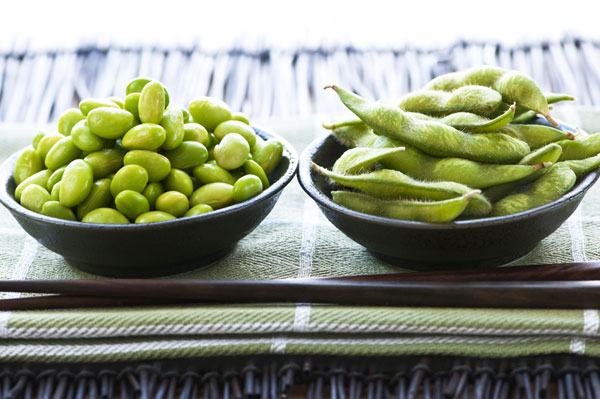
- Soy and soybeans – Genistein and diadzein – phyto-flavonoids effective against some forms of breast cancer and lowering LDL cholesterol
- Citrus fruits, some vegetables, teas and wine contain flavonoids and indoles, powerfulantioxidants that protect tissues, blood vessels, and the heart
Several Herbs To Help Lower Breast-Cancer Risk
| Recommendation | Rationale | Notes |
| Astragalus (Astragalus spp); 2-6 grams of dried root/day; 1/2 teaspoon of fluid extract 3x/day. | Boosts the immune system; if taken regularly, may help prevent cancer. | Use cautiously if you’re a transplant patient or have an autoimmune disease. |
| Dandelion (Taraxacum officinale) root; 10-15 drops tincture 3x/day, or drink tea mornings and evenings. | Improves liver function, which helps detoxify estrogen. | No known health hazards. |
| Green tea (Camellia sinensis); 300-400 mg of polyphenols/day; three cups of green tea contain roughly 240-320 mg. | Antioxidant properties help prevent cancer. | Contains tannin and may cause discomfort to those with sensitive stomachs; also contains caffeine. |
| Psyllium (Plantago ovata); 12-40 grams/day; mix powder with fruit juice or cool water and stir. | Aids in ridding body of excess estrogen. | Not recommended for those who have gastrointestinal problems, obstruction of the bowels, or difficulties regulating diabetes. |
| Turmeric extract (Curcuma domestica); 1.5-3 grams/day.
|
May have anticancer properties. | Can cause stomach distress if used for extended period of time; do not use during pregnancy or if you have obstructed biliary ducts; those with gallstones should take only under supervision of a physician. |
| Note: Larger doses may be necessary for disease management and prevention. Check with your health care practitioner for individualized recommendations. | ||
| Sources: Laurel Vukovic, an Ashland, Oregon-based herbalist and author of Herbal Healing Secrets for Women (Prentice Hall Press, 2000); PDR for Herbal Medicines (Medical Economics Co., 2000). | ||
Herbal Formulas
Basic breast cancer formula (Hsu, 85):
- pu gong ying 15g
- solanum lyratum thunb 15g
- zi cao / lithospermum 15g
- chuan shan jia / anteater scales 15g
- xia ju cao / prunella 30g
- gua lou / trichosanthes 12g
- wang bu liu xing / vaccaria 12g
- orange leaves 9g
- aurantium 9g
- pleione 9g
- bei mu / fritillaria 9g
Another formula from 1970:
- Dang gui 30
- Gua lou / trichosanthes 60
- Huang qi 15
- bai zhi 15
- jie geng / platycodon 15
- bakeri 15
- pu gong ying 9
- zi hua di ding 9
- gui zhi 9
- yuan zhi / polygala 9
- zhen zhu 6
- bai shao 6
- gan cao 6
For pus, fistula, new tissue growth, and recovery, hua yen tang:
- Ren shen 30
- Huang qi 30
- Jin yin hua 30
- Bai zhu 60
- Qian cao gen / madder 6
- brassica 6
- fu ling / hoelen 9
More useful herbs
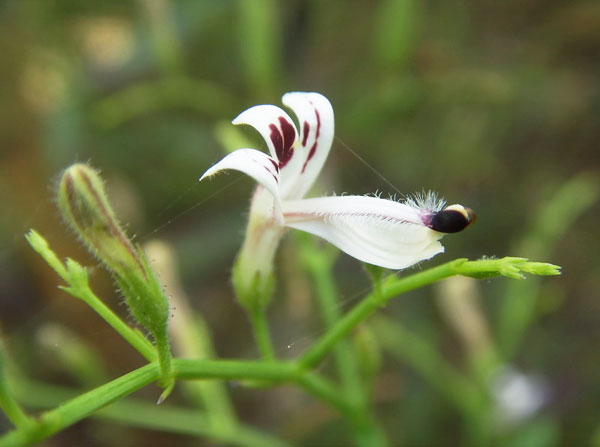
Andrographis
Other names: Chuan Xin Liang, Fah Tolai, Kalmegh, King Of Bitters, Kiryat
Andrographis is a branched, erect annual plant that grows in forests and wastelands in China, India, Pakistan, and Thailand. Its leaves and stems are harvested in late summer for medicinal use. It is cultivated extensively in China and Thailand, and in the East and West Indies.
USES
Andrographis is an ancient medicinal herb with an extensive history in Asia. It has been used for centuries to treat upper respiratory infections, fever, herpes, sore throat, and a variety of other chronic and infectious diseases. In Scandinavian countries, it is commonly used to prevent and treat the common cold. There have been conclusive studies of its use against cancer, AIDS, and a variety of bacterial and viral diseases.
Benefits of andrographis for specific health conditions include the following:
- Atherosclerosis and heart attack. Clinical studies in China have found that andrographis prevents the formation of blood clots and that use of the herb prevents restenosis, or “reclogging,” of arteries after angioplasty. The herb changes the way the linings of blood vessels respond to calcium, helping them to stay open.
- Cancer. It has been shown that if a cancer cell can be made to mature (or differentiate), it will not have the ability to grow out of control. Results of a study have demonstrated that andrographis has potent cell-differentiation-inducing activity on leukemia cells. Moreover, extracts from andrographis leaves are cytotoxic (cell-killing) against cancer cells. Japanese researchers have reported that andrographis stops stomach cancer cells from multiplying. Other studies have found positive results with skin cancer, prostate and breast cancer cells, and non-Hodgkin’s lymphomas.
- Cold, fever, and flu. Andrographis prevents infections with rhinoviruses, the type of viruses most often responsible for the common cold. Taking 200 milligrams a day of an andrographis preparation (marketed as Kan Jang) throughout the cold season reduces the risk of catching a cold by over 50 percent. Andrographis also relieves runny nose, headache, sore muscles, sore throat, swollen lymph nodes, and fatigue, although a dose of 1,200 milligrams or more a day may be needed for this effect. Andrographis has also been used to reduce fever and pain, and for disorders of the intestinal tract.
- Diarrhea and other intestinal disorders. Extracts of andrographis have been shown to have significant effects against the diarrhea associated with E. coli bacterial infections. In one study, chronic inflammation of the colon was treated with a combination of 60 grams of andrographis and 30 grams of rehmannia (Rehmannia glutinosa), with a cure rate of 72 percent. Twenty-six percent experienced symptomatic relief.
- Hepatitis; liver and gallbladder problems. The primary active ingredient in andrographis, andrographolide, increases bile flow and the levels of bile salts and bile acids. It was found to be more potent than silymarin (an active ingredient in milk thistle), which is used clinically as a hepatoprotective agent. Also, the andrographolides present in andrographis are potent stimulators of gallbladder function, therefore reducing the probability of gallstone formation.
- HIV/AIDS. Andrographis counteracts the human immunodeficiency virus (HIV) in at least four different ways. Studies at the University of California have shown that a combination of chemicals in the herb keeps the virus from attaching to healthy T cells. This keeps the celIs from becoming infected. Manufacturer-reported studies found the herb also fights HIV in cells once they have become infected. Also a natural protease inhibitor, andrographis is currently being studied for this property. Compounds in the herb make it more difficult for HIV to take over a “control enzyme” in certain T celIs that force the cells to make copies of the virus. This action is the same as the action of the AIDS drug zidovudine (Retrovir, better known as AZT), and taking andrographis makes it possible for doctors to treat AIDS with lower doses of AZT and fewer side effects. Finally, andrographis keeps HIV from activating an “off-switch” that causes uninfected T cells to die. The use of this herb reduces viral load while helping maintain T-cell counts
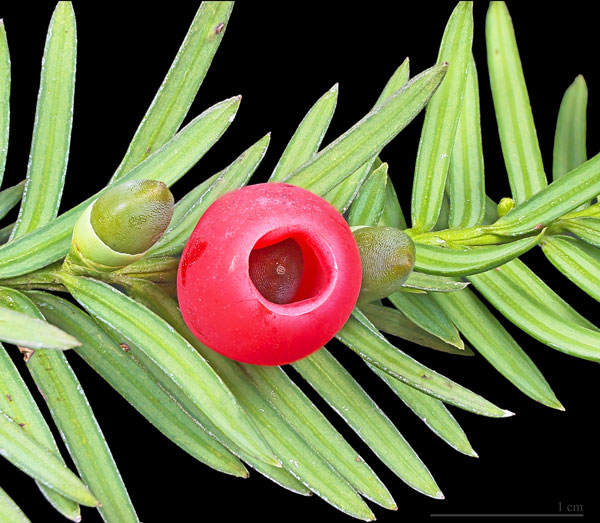
Pacific Yew– Taxus brevifolia
Known by Native Americans as “Chief of the Forest,” medical literature shows that the powerful Pacific Yew tree has been intensively used and analyzed for its remarkable benefits for cellular health, and has also been historically utilized in its natural form as an immune booster, as a salve for cuts, scrapes and skin irritations and more.
PARTS USED
Bark, leaf.
USES
Druids saw the yew as the tree of immortality and held it sacred. Later, Christians planted it in their churchyards. The reason is not clear. Some say it was to keep cattle from eating its poisonous berries; others say it was because a steady supply of the wood was needed for making bows. The Latin name taxa comes from the Greek toxon, the root word for “poison” and “bow”. Legend has it that the famous archer and outlaw Robin Hood was married under a yew tree. Ancient British law protected the yew tree and prescribed penalties for disfiguring yew wood furniture, carvings, or doors. Native Americans also held the yew in high regard. Some tribes saw it as the chief of trees. Although it had a variety of uses, Native Americans, like Europeans, associated it with war and bows.
The compound paclitaxel, from the bark of this plant, stabilizes microtubules, the part of the cell that maintains shape and aids in cell division. It combats certain cancers, most notably ovarian and breast. In the early 1960s the Pacific yew was part of a wide-spread search for cancer-fighting plants. More than 20 years later, clinical trials began. In 1994 scientists succeeded in synthesizing paclitaxel from yew needles and bark after concerns that a severe depletion in the numbers of yews could occur. Needles from a related species, T. baccata, have been used for many ailments, such as tapeworms, epilepsy, and tonsillitis. Medical experts do not recommend self prescribing, however, because yew needles and seeds are known to be toxic
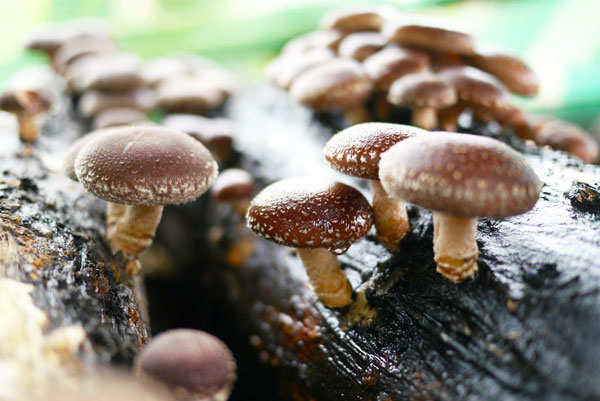
Shiitake
Japenese Mushroom – Lentinus Edodes
The Shiitake mushroom is the most widely cultivated specialty mushroom in the world and is both a prized medicine as well as a culinary delight. Because of its traditional use in folk medicine and its availability, it has been the subject of intense research. Shiitake has adequate nutritional qualities to serve as a main dish. It adapts well to recipes as a meat substitute. Lentinan is not only useful for cancer treatment, but may also prevent the increase of chromosomal damage induced by anti-cancer drugs. Shiitake contains all eight essential amino acids in better proportions than soy beans, meat, milk, or eggs as well as a good blend of vitamins and minerals including vitamins A, B, B12, C, D and Niacin. Shiitake produces a fat-absorbing compound which aids in weight reduction. Delicious to eat and good for health.
USES
Shiitake is good for preventing high blood pressure and heart disease, controlling cholesterol levels, building resistance to viruses, and fighting diseases such as cancer.
Research indicates that lentinan extracted from shiitake may help some people with hepatitis. Case reports from Japan suggest that lentinan also may be helpful in treating people with HIV / AIDS. Lentinan is generally administered by injection and has been used as an agent to prolong the survival of people receiving conventional cancer therapy.
Benefits of shiitake for specific health conditions include the following:
- Cancer. Japanese physicians have long used lentinan’s immune-stimulating capabilities in cancer treatment. Lentinan does not attack cancer cells directly. Instead, it activates the immune system’s lymphokine-activated killer (LAK) and natural killer (NK) cells to combat various types of cancers, including carcinoma, hepatoma, and sarcoma. Lentinan also counteracts the formation of prostaglandins that cause inflammation and keep the immune system’s T cells from reaching maturity.
- Japanese physicians have found that lentinan stimulates the capacity of specialized blood cells to produce immune system chemicals, mainly interleukin and tumor necrosis factor (TNF), that prevent the growth and spread of cancer. Lentinan is especially useful when surgery is not feasible.Stomach cancer is unusually difficult to treat because the early symptoms are often so vague that the cancer is usually quite advanced by the time it is detected. Japanese physicians have found that when surgery for advanced stomach cancer is feasible, treatment with a combination of lentinan and chemotherapy improves the quality of life. In one case, a patient whose stomach cancer had spread to the liver and lymph nodes was still alive five years after surgery. The tumors in his liver disappeared after seventeen months of combined treatment with lentinan and the chemotherapy preparation uracil plus ftorafur (UFT).
- Japanese physicians also use lentinan to treat breast cancer in women who have had mastectomies without follow-up radiation therapy. When chemotherapy is used, lentinan prevents immune-system damage if given before treatment begins. In addition, Japanese studies in animals have shown that lentinan increases the effectiveness of cancer treatment with a specific type of interleukin-2 (IL-2). When used together, the two treatments prevented the spread of breast cancers to the lung.
- Even if cancer has spread to the lung, lentinan can increase survival time. In a group of sixteen people with advanced cancer, Japanese medical researchers injected lentinan directly into malignant areas. All of the patients eventually died, but the average survival time of patients who responded to the treatment was 129 days, compared with 49 days for those who were given the drug.
- Chronic fatigue syndrome and Lyme disease. Japanese physicians report that lentinan is useful for low natural killer cell syndrome (LNKS), a disease that causes disabling fatigue. This disease causes symptoms that appear to be identical to chronic fatigue syndrome as it is diagnosed in the West. Lentinan treatment has been successful in reversing symptoms, including remittent fever, persistent fatigue, and low NK cell activity. The ability of this type of therapy to stimulate NK cells also makes it valuable in the treatment of Lyme disease.
- Common cold and macular degeneration. Shiitake contains polysaccharides (complex sugars) that stimulate the immune system to fight colds. They also enhance production of interferon, which helps to rein in the blood-vessel overgrowth seen in macular degeneration.High cholesterol. Shiitake is beneficial in lowering levels of both total cholesterol and LDL (low-density lipoproteins, or “bad”) cholesterol. In animal studies using eritadenine, a chemical found in shiitake, total cholesterol levels were reduced by 25 percent in one week. This effect was more pronounced in subjects who ate high-fat diets than in those on low-fat diets. Japanese scientists have found that shiitake compounds accelerate the accumulation of LDL in the liver, where it is converted into HDL (high-density lipoprotein, or “good”) cholesterol.
- Other medical uses – Viral infection.
Astragalus
Other names: Astragalus membranaceus, Huang Qi
Astragalus is a twining leguminous perennial plant that grows 11-1/2 to 39 inches high. The stem has many branches, slanting upward and slightly hairy. The pinnate leaves are alternate and the 9 to 21 leaflets are elliptical-shaped, 1/4 to 3/4 inches long and about 1/3 inch wide. The racemes are axillary and the peduncle slender, with anywhere from 3 to 9 flowers growing at the top. The pod is spindle-shaped, inflated, a little over an inch in length and beaked at its tip. Astragalus has 20 to 30 seeds. Astragalus grows in grasses or in thickets on hillsides in northwest China, Manchuria and Mongolia.
Medicinal value is in the root. Astragalus root is flexible and long, as large as your forefinger, and covered with a tough, wrinkled, yellowish- brown skin, which has a tendency to break up into woolly fibers. The woody interior is of a yellowish-white color and has a faint sweetish taste that reminds you of licorice root.
Uses
- Tonic & endurance remedy – Astragalus is a classic energy tonic, perhaps even superior to ginseng for young people. In China it is believed to warm and tone the wei qi (a protective energy that circulates just beneath the skin), helping the body to adapt to external influences, especially to the cold. Astragalus raises immune resistance and manifestly improves physical endurance.
- Control of fluids – Though a vasodilator (encouraging blood to flow to the surface), astragalus is used for excessive sweating, including night sweats. Astragalus is also helpful in both relieving fluid retention and reducing thirstiness. Astragalus encourages the system to function correctly.Immune stimulant – Not an herb for acute illness, astragalus is nonetheless a very useful medicine for viral infections such as the common cold.Other medical uses – Bone cancer, Breast cancer, Cervical cancer, Colorectal cancer, Endometrial cancer, Hodgkin’s disease, Kidney cancer, Liver cancer, Lung cancer, Ovarian cancer. Astragalus treats prolapsed organs, especially the uterus, and it is beneficial for uterine bleeding. Astragalus is often combined with Chinese angelica as a blood tonic to treat anemia.
If you are being treated for cancer, be aware of the battle that is going on in your body. Radiation therapy and chemotherapy add to the fatigue caused by the disease itself. Give your body the rest it needs so that you will feel better as time goes on. Exercise once you feel rested enough. Ask your cancer care team whether your cancer or its treatments might limit your exercise program or other activities. It is important that you consider your emotional, psychological, and spiritual health along with the physical aspects of your recovery from cancer.
Disclaimer
The Content is not intended to be a substitute for professional medical advice, diagnosis, or treatment. Always seek the advice of your physician or other qualified health provider with any questions you may have regarding a medical condition.